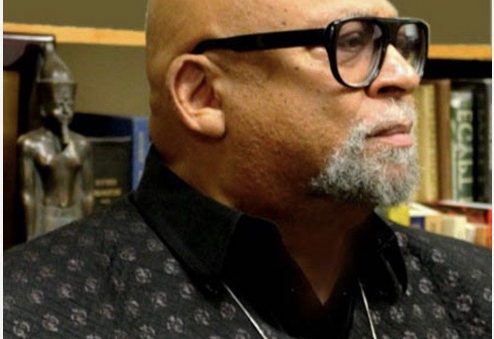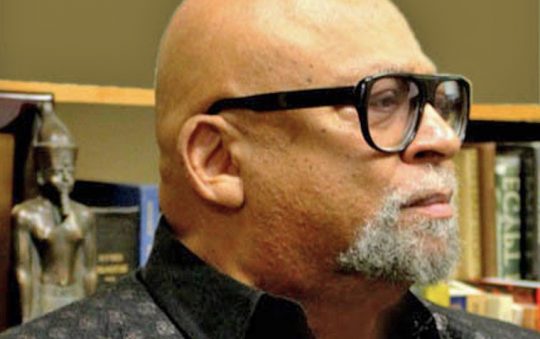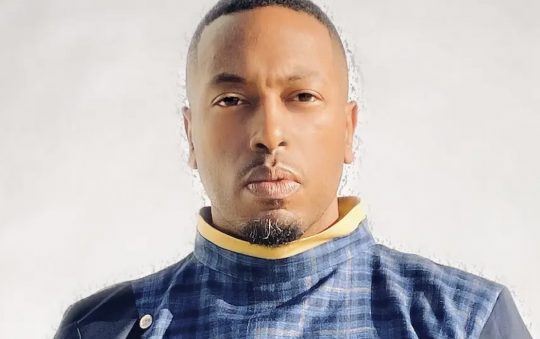
There is no written or reliable record on the day of her birth, but we do know the date of her transition, November 26, 1883; and we know too some central themes of the sacred narrative of her second coming-into-being, her rising from the killing ground and human grave of the Holocaust of enslavement, and her towering above and beyond the context and conditions of her time. They had given her the strange name Isabella, as both a sign of ownership and enslavement and as a way of erasing her original identity and alienating her from her language and culture. But when she decided to free herself and become the African woman she was destined and determined to be, she re-named herself and called herself into being again as Sojourner Truth.
It was a name which reflected the new life of social action and service she had decided to live. Indeed, she said, “I only count my age from the time I was emancipated. Then I began to live”. Self-named with Divine inspiration, she would be a sojourner, staying in a place for a season or short while, preaching and speaking the truth, agitating for change and moving on, serving as a sign and symbol of the possibility and promise of freedom. As she noted, she saw herself called to “travel up and down the land, showing the people their sins and being a sign unto them”. And what greater and more savage sin could be exposed and shown than the killing fields and the swollen blood-red rivers of human suffering in the Holocaust of African enslavement?
For her, as an ardent abolitionist, there was no greater sin than the Holocaust of enslavement, given the savagery against humans and humanity it embodied and imposed. Indeed, she often asked “Oh Lord, what is this slavery that it could do such dreadful things”? She was a witness and victim of its physical, psychological and sexual violence from both male and female enslavers. She had known personally the daily degradation and deprivation, the brutal beatings, maiming, and the cruelty and indignity of the auction block, being bought and sold as an object of labor and varied physical and sexual uses and seeing her parents and children suffer a similar fate. It is in this context of sustained savage treatment that she prayed often for Divine retribution “in double measure” against the ruthless and unrepentantly unrighteous, drawing on biblical texts.
Sojourner was also relentless in her criticism of White Christian hypocrisy, i.e., their being enslavers of fellow human beings and claiming to be Christians, and of Northern Whites for wanting to reduce the problem to a regional Southern one and exempt the North and whole nation from the moral indictment it deserved and the radical reconstruction it required. And she resisted the so-called Christian mobs that disrupted meetings, refusing to run and hide, asking rhetorically, “Shall I run away and hide from the Devil? Me, a servant of the living God”? Reinforced in her faith, she said “I felt as if I had three hearts” and went forth courageously, carrying the day.
Grounded in the African spirituality of her parents and ancestors, she embraced a faith that found its fulfillment in good deeds on earth, in deep and mindful meditation, and in constant conversation with the Divine. Thus, she believed strongly in the spiritual, the good and the triumph of right, contending that “Goodness never had any beginning; it was from everlasting and could never die. But evil had a beginning and must have an end”. And it is the obligation of good and righteous people to put an end to it. Thus, she said to enslavers and racists, “We’ll have our rights…and you can’t stop us. You may hiss as much as you like, but it’s coming”.
Sojourner was also clearly a womanist, a tireless advocate of women’s rights defiantly embodied in her speech and practice. In her signature speech at the Ohio Woman’s Rights Convention in Akron, 1851, she challenged the elite and general White woman’s conception of womanhood, dismissed men’s claim to superiority, insisted on male/female equality and posed a critical role for women in setting an upside down world “right side up again”.
As a womanist, Sojourner was committed to the struggle of her people as a whole, emphasizing the rights of women as a defining feature of Black and human freedom, refusing to separate race and gender and rejecting racist ideas advanced by some White feminists about Black men and women. She struggled for Black emancipation in its fullest form as part and parcel of an overall freedom. Indeed, she reminded White feminists, “I come from another field—the country of the slave”, where in spite of talk of emancipation, it was a case of “slavery partly destroyed, not entirely”. Thus, she said, “I want it root and branch destroyed. Then we will all be free indeed”.
Like Anna Julia Cooper, she saw the universal benefit and value of what we call women’s liberation now, stating it is “for the benefit of the whole creation, not only the women, but (also) for all the men on the face of the earth…” She suggested that the conceding of the equality of women should be an unproblematic almost natural process.
Therefore, she says, “we are now trying for a liberty (freedom) that requires no blood—that women should have their rights—not rights from you; but what belongs to them”. That is to say, as an equal, inalienable and Divine endowment.
But again, as a womanist, she could not and would not forget or reduce concern for her whole people—both women and men, dedicating herself to “the cause of getting land for (them), where they can work and earn their own living”, an economic base on which to build and rebuild their lives. She had anticipated current arguments for reparations, saying: “We have been a source of wealth of this republic…Our unpaid labor has been a stepping-stone to its financial success. Some of its dividends must surely be ours”. Elsewhere, she had said, “White people owe the colored race a big debt and if they paid it all back, they would not have anything left for seed”. And although they cannot repay it all, they could repent, ask forgiveness and share the wealth created in common.
Sojourner Truth looked forward to the day, she said, when Black people would truly “own their soul and body” and enjoy freedom, justice and economic security. In such a context, a truly human community of various peoples could be created in which, in her words, “the equality of feeling, the liberty of thought and speech and the largeness of soul” would be natural and normative.
Dr. Maulana Karenga, Professor and Chair of Africana Studies, California State University-Long Beach; Executive Director, African American Cultural Center (Us); Creator of Kwanzaa; and author of Kwanzaa: A Celebration of Family, Community and Culture and Introduction to Black Studies, 4th Edition, www.OfficialKwanzaaWebsite.org; www.MaulanaKarenga.org.






